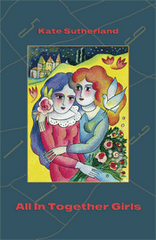





I stopped in at the library on my way home today and found an embarrassment of riches awaiting me on the hold shelf.
The War Against Miss Winter by Kathryn Miller Haines was a LibraryThing recommendation, prompted, I'm sure, by my recent addition of the latest Maisie Dobbs to my collection. It's the first book in a mystery series featuring Rosie Winter, an aspiring actress in WWII era New York, who takes on a part time job at a detective agency and finds herself involved in a more dramatic bit of sleuthing than she anticipated. In a cover blurb, Rhys Bowen declares: "Haines perfectly captures the feel, sights, and sounds of New York in the 1940s." It sounds promising, does it not?
When I clicked over to Amazon in search of a description of the aforementioned Miss Winter book, another recommendation in a similar vein popped up. Apparently those who purchased it sometimes also purchased Million Dollar Baby by Amy Patricia Meade. The latter is the first instalment in yet another historical mystery series featuring a spirited female sleuth, one Marjorie McClelland, a young mystery writer who begins to find her life imitating her art in 1930s Connecticut. Definitely worth a look, I thought.
Lament for a Nation: The Defeat of Canadian Nationalism by George Grant is one of those books that I've heard so much about that I feel as if I've read it even though I haven't. But an excerpt from Michael Ignatieff's new book, True Patriot Love, which recently appeared in The Globe and Mail presented a view of Grant's work that diverged markedly from the impression of it that I'd gleaned from other sources. Clearly, it's high time for me to read it for myself and arrive at my own conclusions.
In my last library loot post, I mentioned my newfound appreciation for Martin Millar's work and my determination to read all of his books. Next up in that venture is Suzy, Led Zeppelin and Me, the catalogue copy description of which strikes me as very odd but entirely irresistible.
Recently, wearied by reading a couple of 500+ page novels back-to-back, I put out a call on Facebook seeking recommendations of slim, minimalist novels. My friend Susann suggested Human Voices by Penelope Fitzgerald. Here's a snippet of description from the jacket copy: "This marvellously witty book, while it doesn't pretend to be an accurate history of Broadcasting House, tells what it was like to work there during the spring and summer of 1940. This was the time when the Concert Hall was turned into a dormitory for both sexes, the whole building became a target for enemy bombers, and, in the BBC as elsewhere, some had to fail and some had to die." I've long been meaning to read something by Fitzgerald, and this book sounds like an excellent place to start.
And, finally, I picked up a trio of books by or about Astrid Lindgren. It won't surprise you to hear that all that musing last week about the Pippi Longstocking/Lisbeth Salander connection set me off on an Astrid Lindgren binge. I began with the Pippi Longstocking books, a number of of which I own and had read several times before. But now I'm ready to branch off into a couple I've not previously encountered. In The Girl With the Dragon Tattoo, Stieg Larsson made reference not just to Pippi but also to a Lindgren character who was new to me, boy detective Kalle Blomkvist. Another blogger tipped me off that in the English translations, Kalle Blomkvist became Bill Bergson, so I typed that name into the library catalogue and turned up Bill Bergson and the White Rose Rescue, a neat little volume which is packaged much like a Hardy Boys book. I ordered a copy of The Robber's Daughter as well, which I'm told is one of Lindgren's best books. And also, for a bit of context, Astrid Lindgren: A Critical Study by Vivi Edström.
It was a joy today, albeit a bit overwhelming, to find that these books had appeared on the hold shelf for me so quickly and all at once. The library is truly a miraculous place. And now, I'd better get reading.


